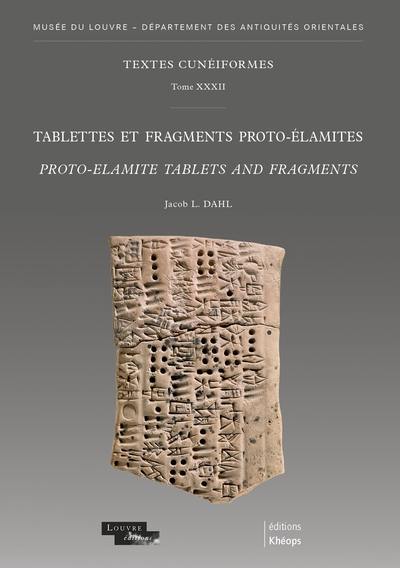
Collection(s) : Textes cunéiformes
Paru le 15/03/2019 | Broché 239 pages
Public motivé
édition Musée du Louvre. Département des antiquités orientales | préface Marielle Pic
Tablettes et fragments proto-élamites
Le proto-élamite est l'un des plus anciens systèmes d'écriture connus, mis au point en Iran vers 3100 avant J.-C. En partie dérivé de l'écriture proto-cunéiforme inventée en Mésopotamie vers 3400, le proto-élamite connaît néanmoins un développement original puis cesse d'être utilisé vers 2900, sans être immédiatement remplacé par un autre système d'écriture.
La très grande majorité des tablettes d'argile inscrites en proto-élamite ont été découvertes sur le site de Suse dès la fin du XIXe siècle et au début du XXe siècle. Poursuivant les travaux de déchiffrement entamés dès le début du XXe siècle, Jacob L. Dahl, professeur d'assyriologie à l'université d'Oxford, livre ici aux chercheurs, étudiants et amateurs l'étude de cent vingt et une tablettes et fragments inédits conservés au musée du Louvre, qui abrite la plus grande collection au monde de textes proto-élamites.
L'édition de ces tablettes est précédée d'une introduction détaillée qui retrace l'histoire de leur découverte et de leur publication et présente les principes de cette écriture ainsi que les difficultés posées par son déchiffrement. Elle est complétée par un index des signes protoélamites utilisés dans ces textes.
Le présent ouvrage signe la reprise de la collection des Textes cunéiformes du Louvre, créée en 1910 par François Thureau-Dangin et dont le dernier volume était paru en 1967.
Proto-Elamite tablets and fragments
Proto-Elamite, which emerged in Iran around 3100 BC, is one of the oldest known writing systems anywhere. Although partly derived from proto-cuneiform, invented in Mesopotamia around 3400, proto-Elamite developed in a very original way before disappearing around 2900, without immediately being replaced by any other writing system.
Most of the inscribed clay tablets with proto-Elamite were discovered at the site of Susa in the late 19th and early 20th centuries. Jacob L. Dahl, professor of Assyriology at the University of Oxford, is continuing efforts to decipher proto-Elamite begun in the early 20th century, presenting here a study for researchers, students and informal learners that examines 121 unpublished tablets and fragments conserved at the Musée du Louvre, home to the world's largest collection of proto-Elamite texts.
The edition of these tablets is preceded by a detailed introduction that traces the history of the discovery and publication, and presents the main characteristics of this writing system, as well as the difficulties of decipherment. It is supplemented by an index of proto-Elamite signs used in these texts.
This volume marks the revival of the Textes cunéiformes du Louvre series launched in 1910 by François Thureau-Dangin, the last volume of which was published in 1967.